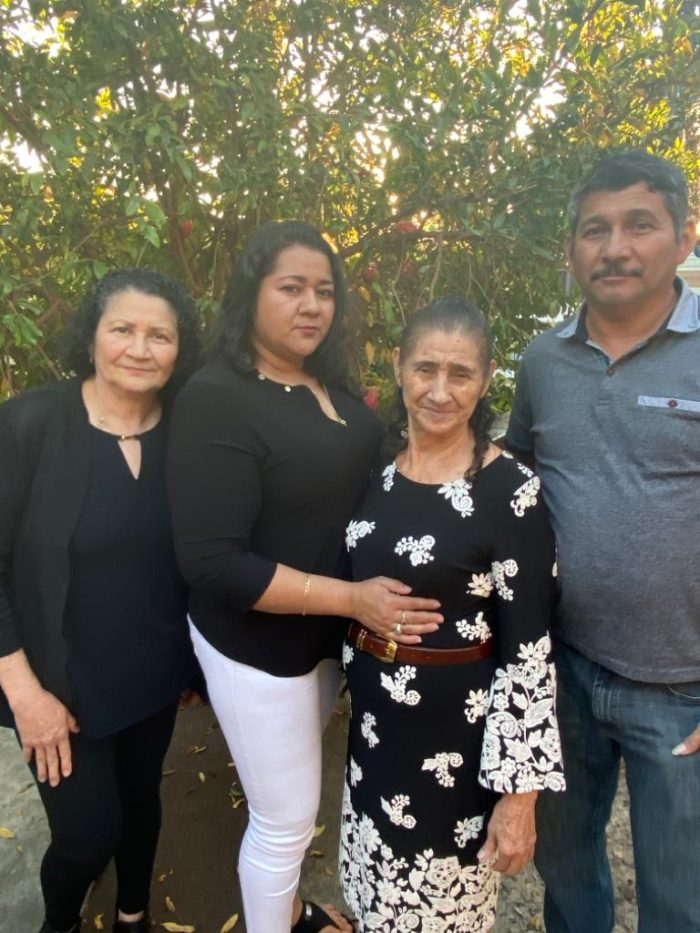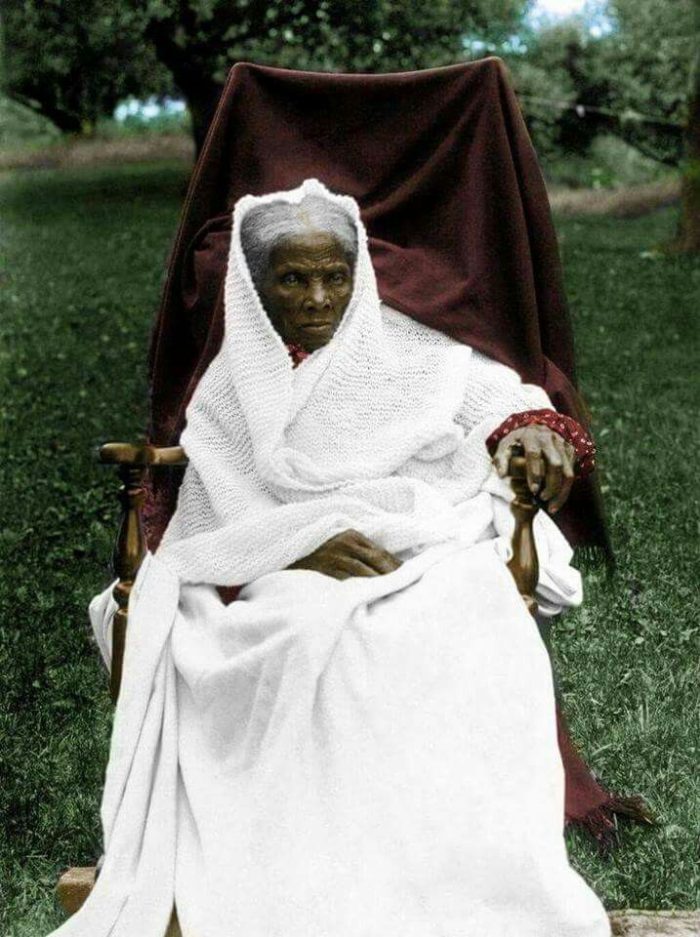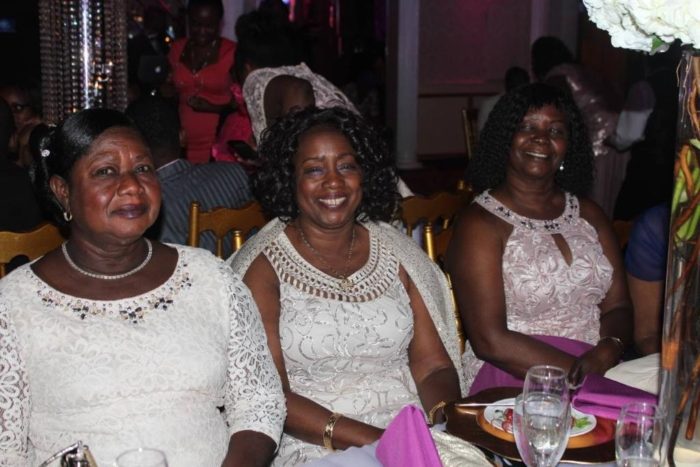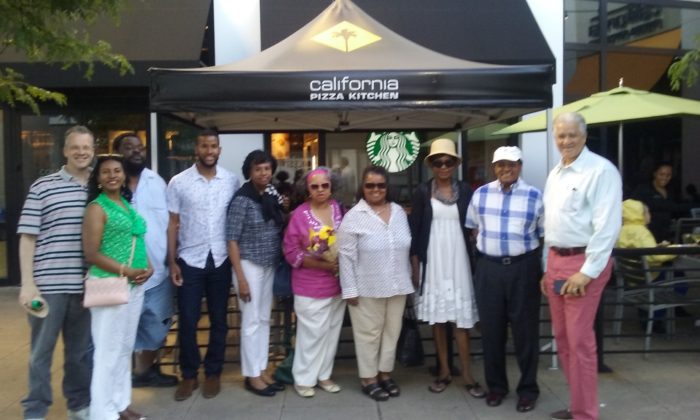If someone asked me how many aunts I have, I probably wouldn’t get the number right—there are just so many of them. After consulting with my mom, however, I have confirmed that I have eight aunts in total. Four are my mom’s sisters and four are my dad’s sisters. Two are in Los Angeles, CA, one is in Cottage Grove, Oregon, and five are in Santa Ana, El Salvador. Those five I haven’t seen since the last time I visited my parent’s home country, which was in 2010 when I was 12 years old.
Continue reading “My Salvadoran Aunts”Author: Yansi Murga
Harriet Tubman Monuments
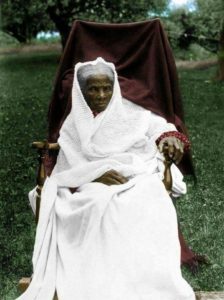
Harriet Tubman was America’s most fierce freedom fighter. She is our ultimate ‘Auntie’! “Aunt Harriet taught us courage and endurance,” said her own descendants who live today. She rose from brutal slavery to emancipate herself and countless others. That’s why we give tribute to Harriet Tubman.
Did you know that in Auburn, New York there is a 47-year-old tradition called the Harriet Tubman Pilgrimage? Visitors from across the globe visit Harriet’s gravesite in Fort Hill Cemetery in honor of her life and commitment to the freedom of African Americans.
This is just one among the many monuments to Harriet that can be found throughout the United States and Canada, almost mimicking her Underground Railroad routes. The monuments, which range from visitor centers to statues, where she is often depicted with a pistol at her waist or with a book in hand, are found mostly in the Northeast and Midwest but can be found in cities and communities throughout the U.S and Canada.
Continue reading “Harriet Tubman Monuments”Haitian pride and respect

By Yansi Murga
Carmen Michel is a Haitian auntie living in Queens, NY who loves cooking, traveling, and listening to Haitian folk and jazz music. She was the third of five children: two brothers, and three sisters, all of whom grew up in Jacmel, Haiti. Despite growing up there, she was the only one of the five who was not born in Jacmel. While her mother was pregnant with her, she went to visit her sickly mother (Michel’s grandmother) in a village called Decouze when suddenly she went into labor and gave birth to Michel. Although Michel is proud of her training as a teacher and nurse, she believes there is more respect to the roles that ‘aunties’ play in Haitian communities.
Continue reading “Haitian pride and respect”Filipino Aunt traditions

By Yansi Murga
Stella Canlas grew up in Quezon City, the Philippines as the eldest of seven children now scattered across the globe. Three siblings are in North America, three in Australia, and one in the Philippines. Growing up, Stella had three aunts on her Dad’s side. However, they lived in the province and she very rarely saw or talked to them, especially because she did not speak their local dialect. On her mother’s side, she had only one uncle, her Tito Baby. But she grew up close to his wife, her Tita Lety, who was also her baptismal ninang or godmother.
Tita Lety
Stella will always hold her Tita Lety close to her heart because, despite having ten children of her own and experiencing financial struggles, she was always kind, welcoming, and generous. Stella explains: “More than the food she would feed me, or the dresses she made for me, she was always a source of strength,” noting the many sacrifices she offered for her children. “Today, 9 of her 10 children are in the USA, a dream that she knew would be fulfilled, a result of sheer tenacity and unwavering faith in God.” Overall, Stella believes her Tita Lety “was quite an inspiration, a reflection of a strong, motivated and kind-hearted woman.”
Stella says that “in a close-knit family, the Filipino aunt is considered the second mother of one’s children” and adds that, “in most cases, parents, in their wills, bequeath their children to their sisters.” Additionally, as roughly 80% of the Philippine population practices Roman Catholicism, the Filipino aunt “is also, more often than not, the baptismal or confirmation godmother of the child.” In this way, the role of the Filipino aunt is often intertwined with the Catholic faith and traditions derived from Catholicism.
Sister-in-law aunts
In her children’s own lives, there is one blood-related aunt, Stella’s sister Rose, but there are also four sister-in-laws, Cecile, Malu, Margarita, and Milagros, who are married to the brothers of Gerry, Stella’s husband. Rose, she says, was and is her children’s favorite tita and was a ninang at her daughter Jen’s wedding. Stella notes: “my children love her unconditionally. She is the epitome of an all-giving, complete aunt.” Her children are also very close to their uncles and aunt-in-law and least one or both of them were principal sponsors for the children’s weddings.
In Filipino weddings, ninangs and ninongs are principal sponsors, or godmothers and godfathers, respectively, who have close relationships to the wedding couple and are chosen by them to be a part of the wedding entourage. They are, of course, chosen to be official witnesses to the wedding, but their participation in the wedding is also symbolic of the support they have given, and will continue to give, to the couple in their marriage.
Ninangs & Ninongs, Wedding Sponsors
Stella’s own children followed the traditional Filipino wedding customs, with, for example, the groom’s family formally asking for the bride’s hand in marriage (the “pamanhikan”). Three out of her four children had traditional Filipino church weddings with both principal and secondary sponsors. The principal sponsors are chosen by the bride and groom and, as Stella’s daughter-in-law, Maia, says, they “tend to be the older AND wiser relatives who helped raise us or played a key role in our childhood formation.” For Stella’s children, the principal sponsors, or ninangs and ninongs, were aunts, uncles, and older friends in the Catholic community that they are all members of. For example, Maia and Geoff chose an aunt who played witness to the beginning of their courtship and an uncle who knew them both from a very young age. They, she says, “continue to be the pillars of guidance, even after 12 years of marriage.”

In these weddings there are also secondary sponsors, usually close friends of the bride and groom. For their own secondary sponsors, Maia and Geoff chose close friends who played a key role in the development of their relationship– “like the friend who knew that romance brewing before we even knew it!” she says. The secondary sponsors participate in the veil, cord, candle, and coin ceremonies and present these tokens to the marrying couple during the nuptial mass.
Deeply symbolic
Each of these tokens is deeply symbolic with, for example, as Maia explains: “the laying of the veil and cord (“yugal“) to symbolize unity and strength, and presenting 13 coins “arrhae” as a symbol of future prosperity throughout the marriage.” Reflecting further on the importance of these objects in the ceremony, Maia says: “though some relatives were unable to physically be present at our wedding, their presence was felt by way of loaning these wedding tokens on our wedding day…and we hope they continue to be handed down in the family for generations to come and keep these traditions alive.”
Aunts are central
Upon being asked what the pivotal role that aunts played in her wedding was, Natasha, Stella’s other daughter-in-law, says: “I think praying for us really. That was and is what our sponsors are to us. Besides being a guide, they would send us anniversary greetings with scriptures/prayers.” Natasha adds: “they’re also of course great role models. Having been a flower[girl] at their own wedding 30+ years ago also serves as an inspiration/encouragement on lasting marriages.” In this way, it is clear that Filipino aunts play an integral role in the upbringing of their nieces and nephews and often continue to do so well into adulthood, as ninangs to them and their spouses. If anyone is interested in learning more about Filipino aunts and family traditions, below are some sources Stella suggests for doing so.
https://theculturetrip.com/asia/philippines/articles/understanding-the-filipino-tita/
http://factsanddetails.com/southeast-asia/Philippines/sub5_6c/entry-3871.html
Dominican-Puerto Rican influences
By Yansi Murga

Raquel Vidal is a community volunteer who directs a Queens church pantry that helps hundreds of local residents. The retired communications and advertising executive shared some highlights about aunts.
Vidal, who has a seemingly endless amount of nieces, nephews, and great and great-grand nieces and nephews, says she would rate herself “as a wonderful aunt.” She was born in Puerto Rico and was one of eight siblings, six from her mother and father’s marriage and two from her father’s previous marriage. Her family eventually moved to New York City, where she grew up and lives today. Vidal credits the aunting she practices today to her mother who, despite living far from her own nieces and nephews, “was present in their lives and shared in many of their joys and sorrows.” She would always write, call, and/or send gifts to them on special occasions all the way from the United States to the Dominican Republic, where the majority of her family remained.
Sharing her mother’s oral history
As her mother was the only one of her siblings to migrate to the United States, Vidal grew up far away from her family in the Dominican Republic. The extent of the memories and interactions that she has with them is through oral history presented to her by her mother. Supplementing these oral histories are the trips she had a chance to take to the Dominican Republic as a teen and adult, as well as her mother’s little grey memory box with treasured family photographs. At the NYC dinner table, her mother would perform what was the ceremony of recounting the memorable stories behind every photo, a tradition continued by Vidal and her sister Sara after their mother’s passing.
Becoming an aunt
Since becoming an aunt herself, Vidal does as her mother did with her. She shares foundational family history with her nieces and nephews. The Vidal sisters never married or had children of their own. So, they were always the aunts who were available for everyone. Sara, she says, was “the keeper of the flame of oral history.” Unlike her, Auntie Sara could spend hours on the phone telling family stories to her nieces and nephews, something Vidal misses dearly since her sister’s passing. Still, Vidal— or Auntie Raquel— often assumes this role because she believes that family history holds value in the lives of her nieces and nephews today.
Black Puerto Rican heritage
So what pieces of family history did they pass on? Well, as much as they could. Vidal and her sister told their nieces and nephews about their grandfather who was born in 1901 in Puerto Rico and was the eldest of three brothers. About his mother, their great grandmother, who was born in 1868, not long after the emancipation of enslaved Black people in the United States. She was a very motivated woman and worked hard cleaning the homes of wealthy people in order to give her son the opportunity to go to college. Which is exactly what he did. He was a college graduate— a feat that was unheard of at the time for a Black Puerto Rican like him. He was the only one in his family who went beyond a high school education, later became a professor, and even attended seminary school to become a minister and missionary.
Dominican heritage
They also told their nieces and nephews about their maternal grandmother who was one of six children born and raised in the Dominican Republic during the dictatorship of Rafael Trujillo. About the brother who was killed in the military when he was in his early twenties and the deep trauma it caused her. About how later she left home at the age of 18 to become a Seventh-day Adventist— also unheard of at the time for a young, unmarried woman with a strict Catholic upbringing. About how, at the age of 26, she met the man that would soon become her husband, and much later would become their grandfather. “Every step of the line has a story all its own”, Vidal says. “Every branch of the family tree has so much to say and, unless you tell [oral history], people will be deprived of something that could be foundational in their lives.” Oral history, she believes, is educational; “it allows them to form a foundation in their own lives out of something that existed before.”
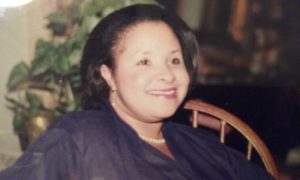
Intentional memory creation
Equally as important in her aunting practices is the act of intentional memory creation—something that can become what she calls “a sibling rivalry of sorts, but of service.” She explains that “doing something with Auntie Raquel, whether it is sharing a holiday meal, going on a school break vacation, or doing something for [my niece or nephew] has an aura all its own. I have the opportunity to out-do and out-serve my siblings.”
‘Camp Auntie Raquel’
She recounts, for example, that when her nephews were younger, their mother would put them in day camps over the summer. One year, they were asked what summer camp did he want to attend and her nephew Daniel said he wanted to go to ‘Camp Auntie Raquel.’ “They still talk about that today!” she says. “None of my siblings can claim that beautiful piece of Daniel’s history. It becomes part of your individual connection.” She concludes, “there’s room for this sibling rivalry when everyone is working together to create wholesome nephews and nieces.”
Teaching about Nelson Mandela
Raquel remembers when she and her sister Sara took their 5-year-old nephew Andrew to a Nelson Mandela rally. To this day, her nephew remembers a Jamaican, Reggae song that was playing out of a car when they were leaving the event: “Stand Up, Stand Up, Stand Up for Your Rights! Stand up, Stand Up, Don’t Give Up the Fight.” This, she says, “is in his memory because we intentionally went there so it could be in his memory, so he could learn who Nelson Mandela was. That this is important and being a part of it is important.” These kinds of intentional memories—the kind that will last a lifetime, both theirs and hers— are the kind that she treasures and strives to instill in as many nieces and nephews as she can.
Show love
All in all, Vidal says that of primary importance in her role as an aunt is demonstrating love and individuality and “creating the belief and conviction in each of [her nieces and nephews] that they are special in their own specific way.” Lastly, she says “Vidal aunts are special aunts because we love, we care, we show up. We are what we do, so we are always doing something!”—and it is pretty clear that Auntie Raquel loves what she does.

